William J. Wilkinson
Bayes-Newton Methods for Approximate Bayesian Inference with PSD Guarantees
Nov 03, 2021
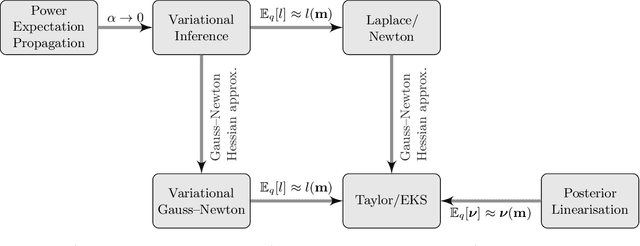
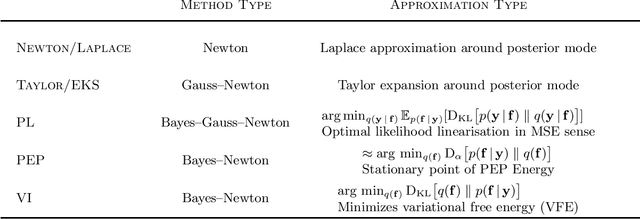

Abstract:We formulate natural gradient variational inference (VI), expectation propagation (EP), and posterior linearisation (PL) as extensions of Newton's method for optimising the parameters of a Bayesian posterior distribution. This viewpoint explicitly casts inference algorithms under the framework of numerical optimisation. We show that common approximations to Newton's method from the optimisation literature, namely Gauss-Newton and quasi-Newton methods (e.g., the BFGS algorithm), are still valid under this 'Bayes-Newton' framework. This leads to a suite of novel algorithms which are guaranteed to result in positive semi-definite covariance matrices, unlike standard VI and EP. Our unifying viewpoint provides new insights into the connections between various inference schemes. All the presented methods apply to any model with a Gaussian prior and non-conjugate likelihood, which we demonstrate with (sparse) Gaussian processes and state space models.
Spatio-Temporal Variational Gaussian Processes
Nov 02, 2021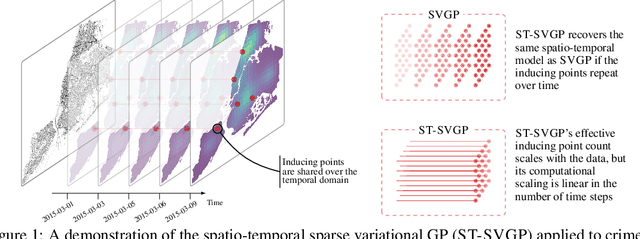

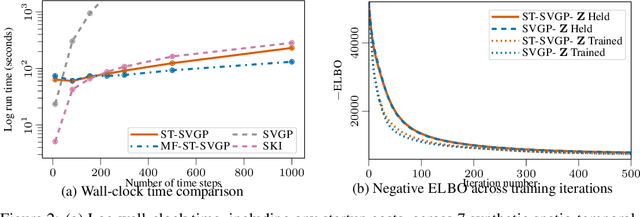

Abstract:We introduce a scalable approach to Gaussian process inference that combines spatio-temporal filtering with natural gradient variational inference, resulting in a non-conjugate GP method for multivariate data that scales linearly with respect to time. Our natural gradient approach enables application of parallel filtering and smoothing, further reducing the temporal span complexity to be logarithmic in the number of time steps. We derive a sparse approximation that constructs a state-space model over a reduced set of spatial inducing points, and show that for separable Markov kernels the full and sparse cases exactly recover the standard variational GP, whilst exhibiting favourable computational properties. To further improve the spatial scaling we propose a mean-field assumption of independence between spatial locations which, when coupled with sparsity and parallelisation, leads to an efficient and accurate method for large spatio-temporal problems.
Sparse Algorithms for Markovian Gaussian Processes
Mar 19, 2021
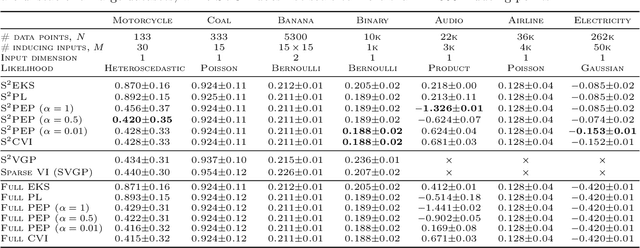


Abstract:Approximate Bayesian inference methods that scale to very large datasets are crucial in leveraging probabilistic models for real-world time series. Sparse Markovian Gaussian processes combine the use of inducing variables with efficient Kalman filter-like recursions, resulting in algorithms whose computational and memory requirements scale linearly in the number of inducing points, whilst also enabling parallel parameter updates and stochastic optimisation. Under this paradigm, we derive a general site-based approach to approximate inference, whereby we approximate the non-Gaussian likelihood with local Gaussian terms, called sites. Our approach results in a suite of novel sparse extensions to algorithms from both the machine learning and signal processing literature, including variational inference, expectation propagation, and the classical nonlinear Kalman smoothers. The derived methods are suited to large time series, and we also demonstrate their applicability to spatio-temporal data, where the model has separate inducing points in both time and space.
Fast Variational Learning in State-Space Gaussian Process Models
Jul 17, 2020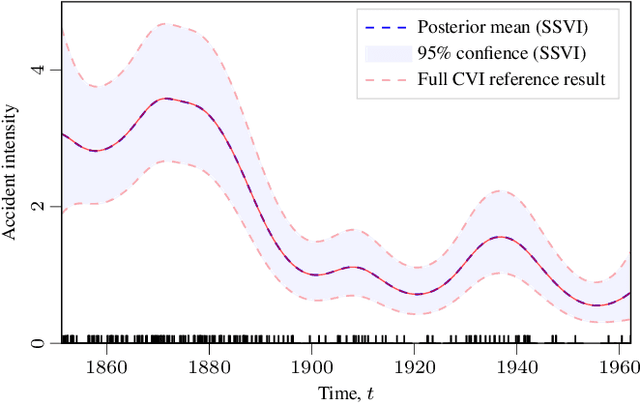

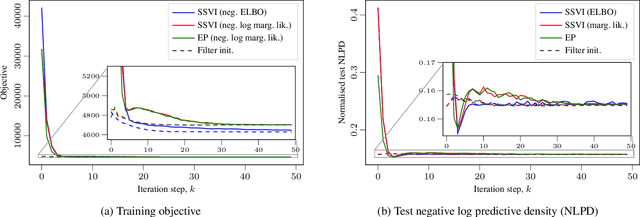
Abstract:Gaussian process (GP) regression with 1D inputs can often be performed in linear time via a stochastic differential equation formulation. However, for non-Gaussian likelihoods, this requires application of approximate inference methods which can make the implementation difficult, e.g., expectation propagation can be numerically unstable and variational inference can be computationally inefficient. In this paper, we propose a new method that removes such difficulties. Building upon an existing method called conjugate-computation variational inference, our approach enables linear-time inference via Kalman recursions while avoiding numerical instabilities and convergence issues. We provide an efficient JAX implementation which exploits just-in-time compilation and allows for fast automatic differentiation through large for-loops. Overall, our approach leads to fast and stable variational inference in state-space GP models that can be scaled to time series with millions of data points.
State Space Expectation Propagation: Efficient Inference Schemes for Temporal Gaussian Processes
Jul 12, 2020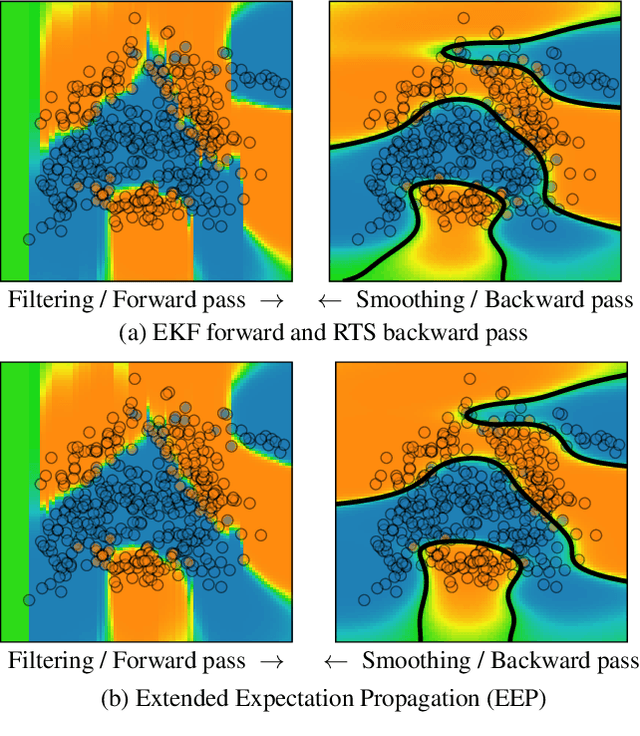
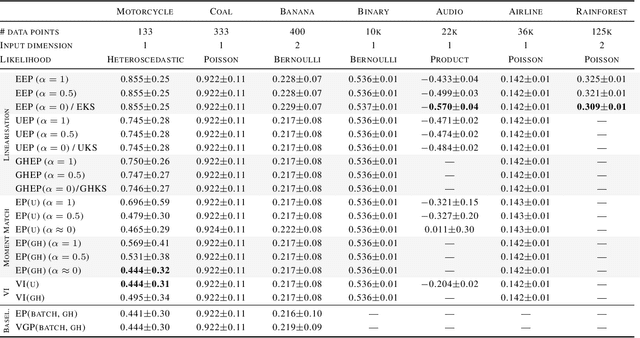

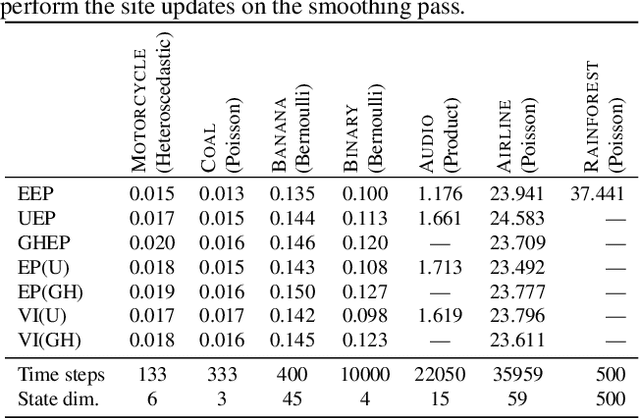
Abstract:We formulate approximate Bayesian inference in non-conjugate temporal and spatio-temporal Gaussian process models as a simple parameter update rule applied during Kalman smoothing. This viewpoint encompasses most inference schemes, including expectation propagation (EP), the classical (Extended, Unscented, etc.) Kalman smoothers, and variational inference. We provide a unifying perspective on these algorithms, showing how replacing the power EP moment matching step with linearisation recovers the classical smoothers. EP provides some benefits over the traditional methods via introduction of the so-called cavity distribution, and we combine these benefits with the computational efficiency of linearisation, providing extensive empirical analysis demonstrating the efficacy of various algorithms under this unifying framework. We provide a fast implementation of all methods in JAX.
Movement Tracking by Optical Flow Assisted Inertial Navigation
Jun 24, 2020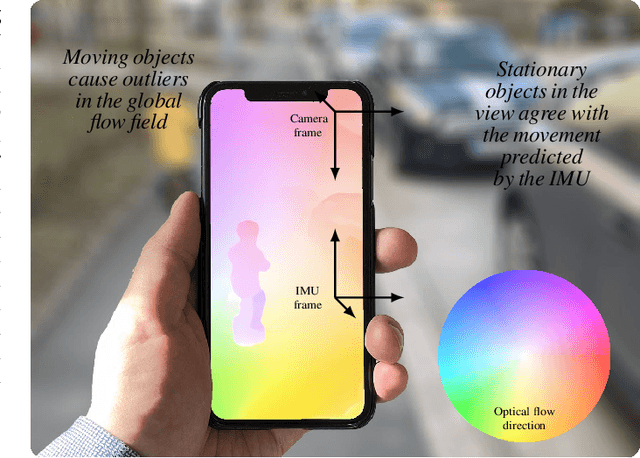

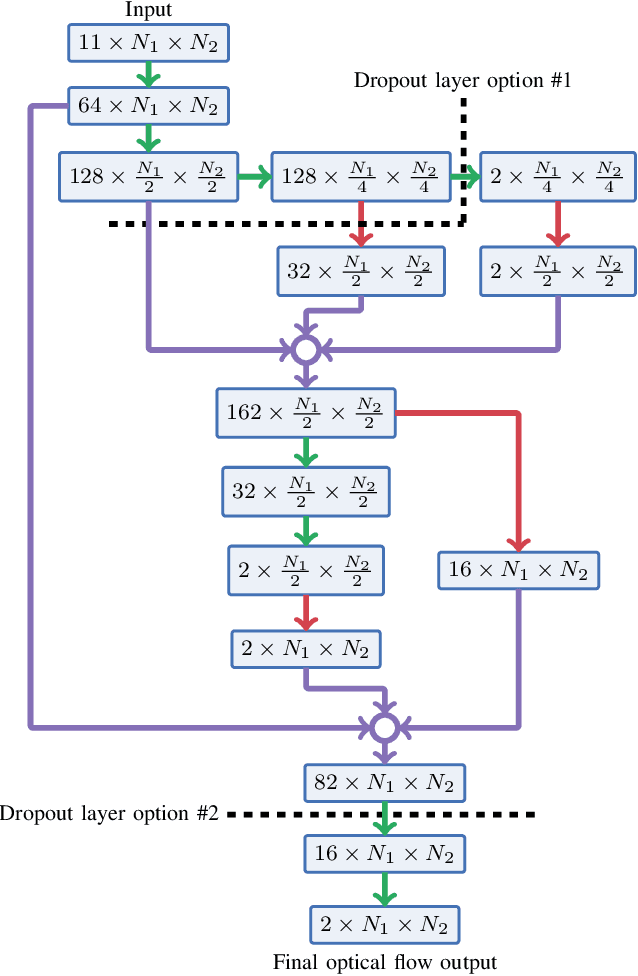
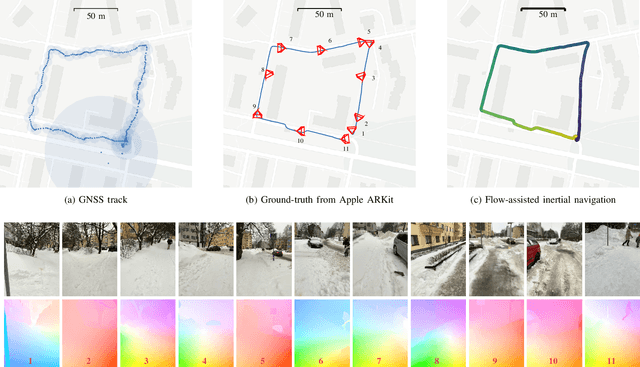
Abstract:Robust and accurate six degree-of-freedom tracking on portable devices remains a challenging problem, especially on small hand-held devices such as smartphones. For improved robustness and accuracy, complementary movement information from an IMU and a camera is often fused. Conventional visual-inertial methods fuse information from IMUs with a sparse cloud of feature points tracked by the device camera. We consider a visually dense approach, where the IMU data is fused with the dense optical flow field estimated from the camera data. Learning-based methods applied to the full image frames can leverage visual cues and global consistency of the flow field to improve the flow estimates. We show how a learning-based optical flow model can be combined with conventional inertial navigation, and how ideas from probabilistic deep learning can aid the robustness of the measurement updates. The practical applicability is demonstrated on real-world data acquired by an iPad in a challenging low-texture environment.
End-to-End Probabilistic Inference for Nonstationary Audio Analysis
Mar 12, 2019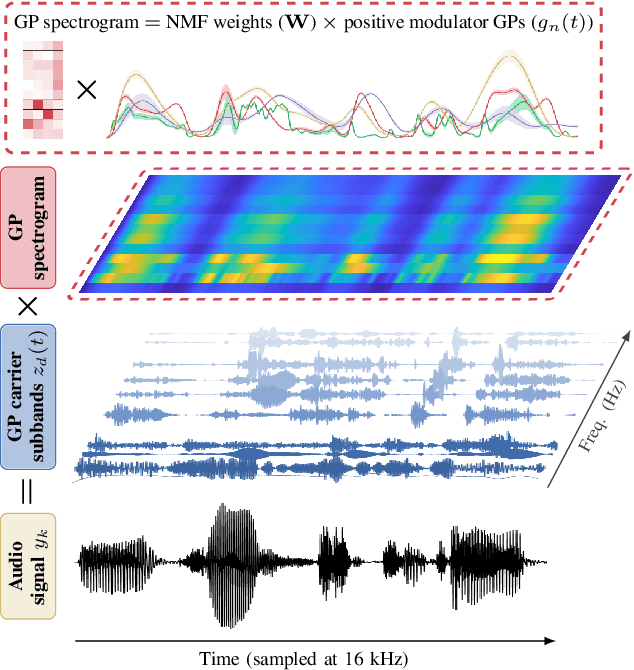

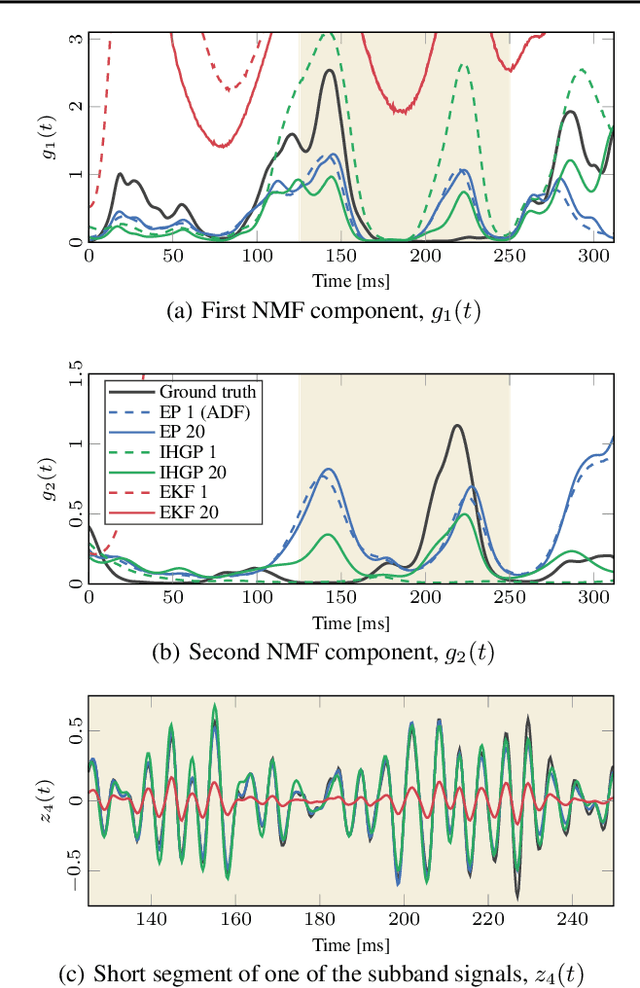
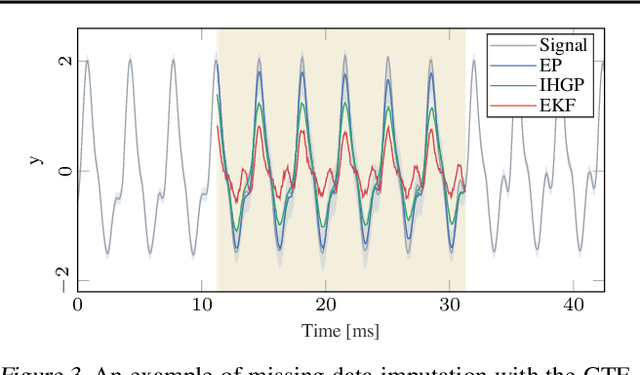
Abstract:A typical audio signal processing pipeline includes multiple disjoint analysis stages, including calculation of a time-frequency representation followed by spectrogram-based feature analysis. We show how time-frequency analysis and nonnegative matrix factorisation can be jointly formulated as a spectral mixture Gaussian process model with nonstationary priors over the amplitude variance parameters. Further, we formulate this nonlinear model's state space representation, making it amenable to infinite-horizon Gaussian process regression with approximate inference via expectation propagation, which scales linearly in the number of time steps and quadratically in the state dimensionality. By doing so, we are able to process audio signals with hundreds of thousands of data points. We demonstrate, on various tasks with empirical data, how this inference scheme outperforms more standard techniques that rely on extended Kalman filtering.
Unifying Probabilistic Models for Time-Frequency Analysis
Nov 12, 2018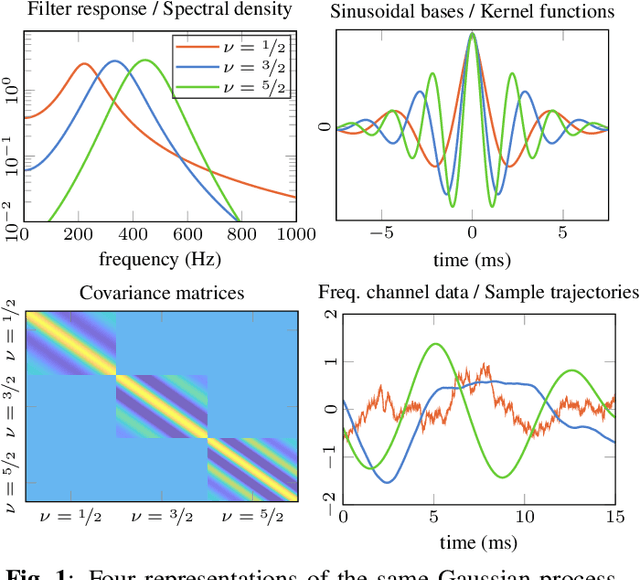
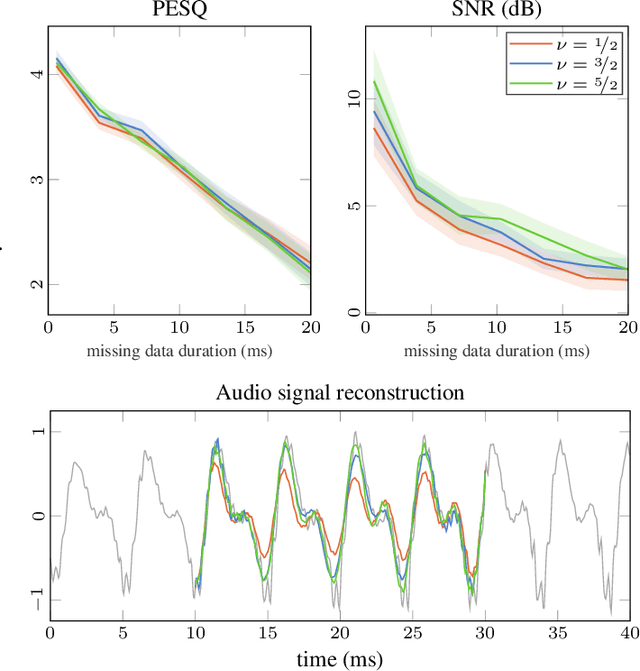
Abstract:In audio signal processing, probabilistic time-frequency models have many benefits over their non-probabilistic counterparts. They adapt to the incoming signal, quantify uncertainty, and measure correlation between the signal's amplitude and phase information, making time domain resynthesis straightforward. However, these models are still not widely used since they come at a high computational cost, and because they are formulated in such a way that it can be difficult to interpret all the modelling assumptions. By showing their equivalence to Spectral Mixture Gaussian processes, we illuminate the underlying model assumptions and provide a general framework for constructing more complex models that better approximate real-world signals. Our interpretation makes it intuitive to inspect, compare, and alter the models since all prior knowledge is encoded in the Gaussian process kernel functions. We utilise a state space representation to perform efficient inference via Kalman smoothing, and we demonstrate how our interpretation allows for efficient parameter learning in the frequency domain.
A Generative Model for Natural Sounds Based on Latent Force Modelling
Feb 02, 2018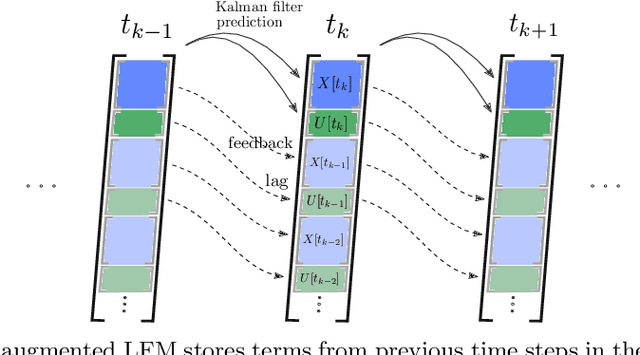


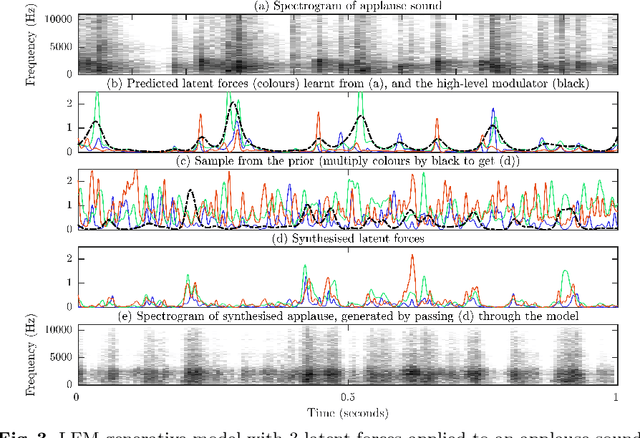
Abstract:Recent advances in analysis of subband amplitude envelopes of natural sounds have resulted in convincing synthesis, showing subband amplitudes to be a crucial component of perception. Probabilistic latent variable analysis is particularly revealing, but existing approaches don't incorporate prior knowledge about the physical behaviour of amplitude envelopes, such as exponential decay and feedback. We use latent force modelling, a probabilistic learning paradigm that incorporates physical knowledge into Gaussian process regression, to model correlation across spectral subband envelopes. We augment the standard latent force model approach by explicitly modelling correlations over multiple time steps. Incorporating this prior knowledge strengthens the interpretation of the latent functions as the source that generated the signal. We examine this interpretation via an experiment which shows that sounds generated by sampling from our probabilistic model are perceived to be more realistic than those generated by similar models based on nonnegative matrix factorisation, even in cases where our model is outperformed from a reconstruction error perspective.
 Add to Chrome
Add to Chrome Add to Firefox
Add to Firefox Add to Edge
Add to Edge